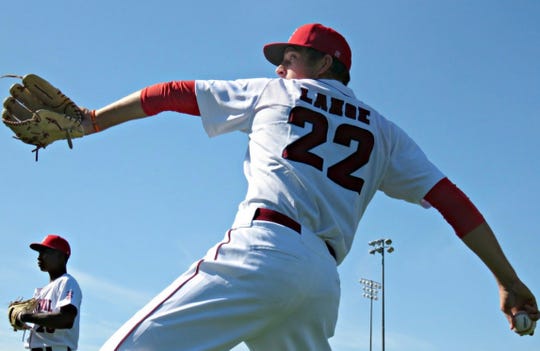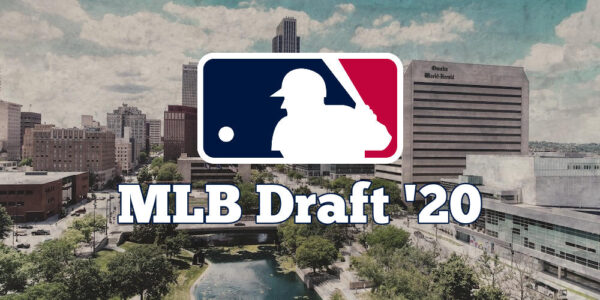Grading the Padres’ 2020 MLB Draft: Justin Lange


Taking a look at the San Diego Padres’ selection of right-handed pitcher Justin Lange.
A successful draft is usually not built on the backbone of a great first-round pick. The exception, of course, is if the pick is spent on a future Most Valuable Player- caliber talent such as Mike Trout or Manny Machado. Instead, a team’s choices in the second and further rounds are nearly as crucial for a front office to nail.
Many clubs in this day and age flounder because of their tenaciousness in the latter parts of the draft. For example, Colorado’s superstar Nolan Arenado was taken in the second round (59th overall) of the 2009 First-Year Player Draft. Moreover, St. Louis’ catching legend Yadier Molina heard his name pronounced in the fourth round, with the 113th selection of the 2000 draft. The gains that these and other front offices have made in rounds beyond the first proves how instrumental the Padres’ picks had to be after Robert Hassell III, who was selected in the first round by the team.
While many people are and will continue to be reasonably complacent over Preller’s decision to choose Hassell, one must look at the grand picture. In other words, were the Padres’ subsequent picks worth, in terms of value, the selection of a lesser talent than high school outfielder Zac Veen who was taken immediately afterward? An avid fan of the San Diego Padres would argue that the money-saving deal for Hassell was a smart move by Preller and Co. because it allowed the team to grab a high-ceiling wild card in Texas high schooler Justin Lange.
Lange, a right-handed fireballer from Llano High School in Texas, had an abnormal journey to being a top selection in the 2020 MLB Draft.
Largely overlooked as a junior due to having an average fastball, middling secondaries, and poor control and command, Lange’s stock skyrocketed in the months before the June event. After topping out at 95 mph during the September Future Star Series, the Texan dedicated himself to hard work, putting on 25 pounds of muscle and becoming one of the most athletic pitchers in this year’s draft. He now weighs in at 6’4″ and 220 lbs., enabling him to put more force behind the ball and reach 100 mph with his fastball. He has shown this ability throughout the spring, hitting the upper-90’s when he can’t reach his maximum velocity.
This raw ability commanded the Athletic writer Keith Law’s attention with him, arguing that “In past years, he might have gone in the top 10.” The reason that he wasn’t this year is because of the immense growth he made between last year and this one, as well as the fact that Lange was unable to demonstrate his improvement in a large enough sample size. In other words, even though Lange had the fastball to exhibit front-line starter stuff, his short track record hurt his chances of being selected in the first round.

In addition, there were other problems with Lange’s profile, which allowed him to slip and may still have a profound negative effect on his future. Besides the big fastball, the Texan’s secondaries are either poor in consistency or quality.
While MLB.com assigned him a 55-grade slider, the source was also careful to note how the righty’s slider is “very inconsistent and ranges from a well-below sweeper to a plus pitch in the mid-80s with much more bite.” In other words, while his slider has a lot of potential, as of right now, it is locked up. The assumption is that he only needs professional coaching to iron out the consistency issues.
However, he will require more time to develop since his other off-speed pitch, his changeup is below-average. This is often the case for amateurs who rely on their high-velocity fastballs to dominate their competition. While developing in high school or college, these flamethrowers simply do not require a solid tertiary offering to look like superstars. For example, Michael Kopech, the White Sox’s supposed future ace, was chosen from Mt. Pleasant High School (TX) with the 33rd overall pick; yet, he lacked an adequate third pitch because of his high-octane fastball. Due to the insanity of his trusty #1, Kopech did not have to rely on his secondaries, much in the same way that Lange has not. As a result, both righties foregone college with similar secondary pitch problems.
Lastly, he needs considerable work with his command and control. This is another problem often seen in pitchers with lively fastballs. As for Lange, many scouts regard this asset of his game as the weakest. Baseball America describes the Llano alumni’s command and control as “near the bottom of the scale at the moment.” His lack of talent in this area is what makes him a high ceiling-low floor risk. His future progression in it will ultimately determine if Lange becomes a steal or a waste of a top draft pick.
In a way, Lange is reminiscent of Kansas City’s 2015 2nd round pick Josh Staumont. Although earlier, I drew a link between Lange and Kopech, Kopech has a much better slider than Lange as well as an additional pitch. In contrast, Staumont, who was at one time suggested being a front-line starter one day, has only three pitches, two of which are above average and a changeup, which is not. There are some differences, although minute, with Staumont’s curveball being a tad better than Lange’s slider and Lange’s command and control a slight improvement over Staumont’s. Either way, the comparison shows the potential of Lange if everything clicks. As Staumont was once regarded as a top-end starting pitcher prospect, so Lange has the same potential. The most likely outcome if everything works out well for the Padres’ 2nd pick in the 2020 draft is a #2 type starter. This is unlikely due to all the obstacles mentioned above that are in Lange’s way; however, it is a highly intriguing possibility worthy of being San Diego’s competitive balance pick.
[wpedon id=”49075″ align=”right”]
Grade: B-
An interesting fact about Lange is that he was being looked at by scouts in high regard as an outfielder. Because of his top athleticism, he showed spurts of raw power and speed. Maybe if the pitching doesn’t pan out, Lange can be a multi-tooled outfielder.
I write, I write, and then I write some more.. Lifelong Padres & Chargers fan who is tired of the acceptance of losing that grips all of San Diego sports fans!